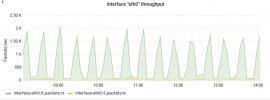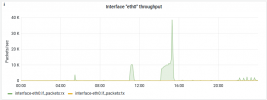Hey guys,
while my site was under DoS, I got multiple erros within the proxy_error_log file in the domains logs directory.
When I entered the website, I got "500 internal server error - nginx".
- There where no error logs on nginx or apache that the max connections are reached. (var/log/apache2 & var/log/nginx)
- Websites are running via cloudflare (cloudflare ips are whitelisted in fail2ban)
- The attack was very weak (150pps in plesk monitoring) but websites where down after that. No resources in plesk monitoring reached it's limit.
- Plesk is running on a vps with default php settings.
Do you have any suggestions how to fix these timeout errors? And why are the websites down that fast?
while my site was under DoS, I got multiple erros within the proxy_error_log file in the domains logs directory.
Code:
upstream timed out (110: Connection timed out) while reading response header from upstream
connect() failed (110: Connection timed out) while connecting to upstream
upstream timed out (110: Connection timed out) while SSL handshaking to upstream
socket() failed (24: Too many open files) while connecting to upstreamWhen I entered the website, I got "500 internal server error - nginx".
- There where no error logs on nginx or apache that the max connections are reached. (var/log/apache2 & var/log/nginx)
- Websites are running via cloudflare (cloudflare ips are whitelisted in fail2ban)
- The attack was very weak (150pps in plesk monitoring) but websites where down after that. No resources in plesk monitoring reached it's limit.
- Plesk is running on a vps with default php settings.
Do you have any suggestions how to fix these timeout errors? And why are the websites down that fast?


